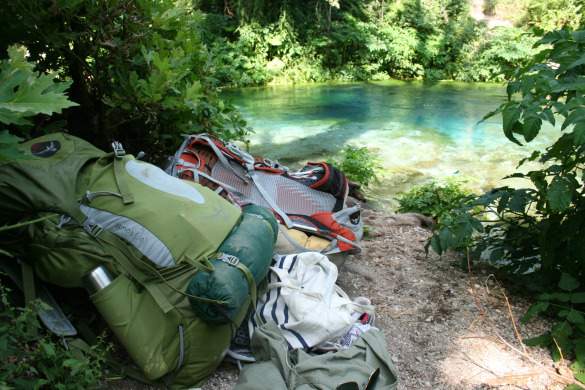Is time to move Albania to the top of your travel list
Tell someone you’re traveling to Albania, and you’re likely to get asked a couple of questions. “Where is Albania?” “Is it dangerous?” “What are you going to do there?” and most common of all, “Why?”
The tiny, often misunderstood Balkan state is located across the Adriatic Sea from Italy, directly above Greece. The mountainous country is filled with pristine rivers and sparkling mountain springs, bustling cities and charming towns, and its rocky coastline stretches hundreds of kilometers along both the Adriatic and Ionian Seas, providing stunning beaches that rival those of its better-known neighbors like Greece, Italy, and Croatia. But Albania’s status as one of Europe’s poorest countries and its slightly checkered past mean that mention of its name is more likely to elicit thoughts of riots and communist dictatorships than beautiful beaches and the vibrant café culture of Tirana, the country’s capital.
But Albania is changing. Today the country is being built up fast by a people eager to recover from almost 50 years of an oppressive communist dictatorship and the unrest that accompanied its transition to democracy. Today’s Albania offers young, lively cities, incredibly beautiful natural scenery, and an extremely open and friendly people eager to show off their country, all at a price that can’t be found elsewhere on the continent. What’s more, Albania remains one of the few undiscovered paradises in Europe. But like Croatia before it, it’s only a matter of time before the wandering masses start to pour in. Here are ten reasons why you should buy your ticket, pack your bags, and beat the crowds to this remarkable Balkan nation.
1. The lek
Albania joined NATO in 2009 and has its eye on EU membership as well, but it will be at least a few more years before it’s accepted into the Euro zone. The official currency there today is the lek, and the exchange rate between it and other major world currencies alone should be enough to draw hoards of international tourists to Albania.
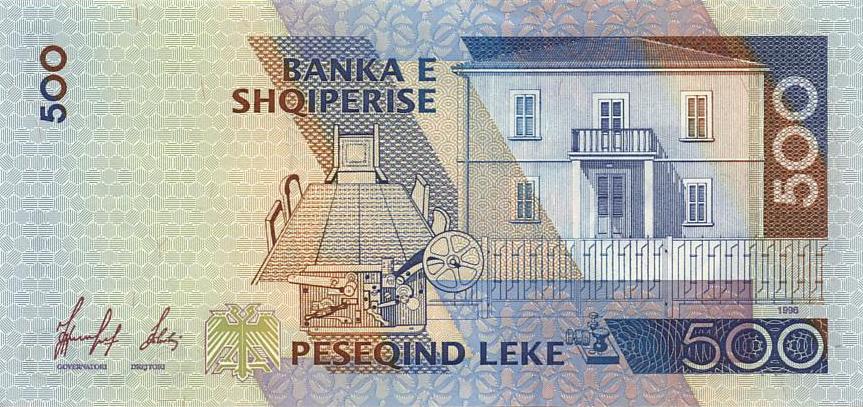
At first glance, the prices in Albania may not seem so amazing. Three hundred lek for a pizza or 2,000 lek for a night in a hotel room might seem a little steep to the uninitiated. Consider the exchange rate and you’ll begin to understand: at the time of writing, one Albanian lek (sometimes also written as leke) was equivalent to just under a cent, or 0.009 dollars. So that 80 lek ice cream cone? That will set you back about 75 cents. That 1,800 lek double occupancy ensuite hotel room with a view of the beach in Vlora? It’s a bargain at just under $17. And that dinner of steamed mussels and a bottle of Albanian white wine for two on the beach in Ksamili? At about 600 lek, you’ll be spending approximately six dollars total.
Beer and coffee can often serve as budgetary gauges for international travelers, and you’ll be happy to hear that it’s rare to pay over a dollar for either (usually closer to 45 cents for the coffee), provided that you go for the typical Albanian bottled beer or a shot of the strong, thick espresso that the locals drink.
2. The beaches
The beaches in Albania rival anything that can be found in Europe, and with 362km of coastline stretching through both the Adriatic and Ionian Seas, beachgoers have plenty of sandy spots to pick from.
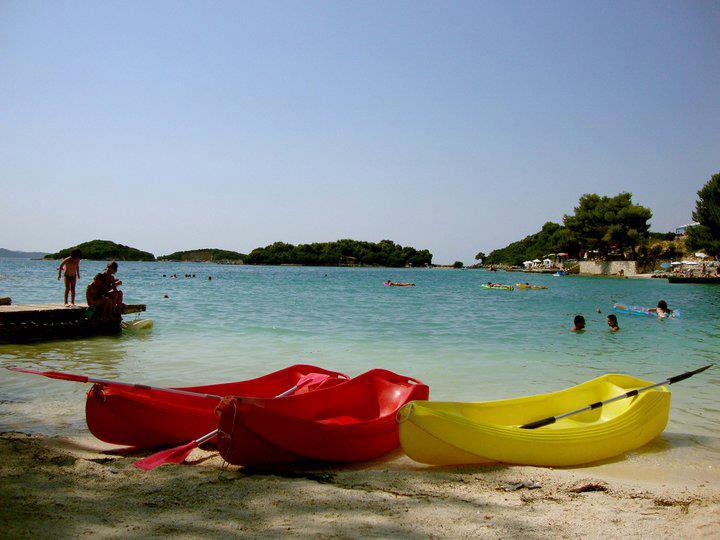
Dhermi, Himara, and Ksamili are some of the names that one might uncover with an online search or a peek into a guidebook, and they are all beautiful. A lot of the bigger coastal cities like Saranda and Vlora also have beaches accessible on foot from the city center, though I’d recommend skipping the city beaches as they are usually a bit dirty, very developed, and quite busy. Traveling a bit outside of the cities (particularly heading south out of town) is a surefire way to find some beautiful beaches that are less crowded and cleaner, but still easy to reach by taxi or bus.
Many of the country’s very best beaches are further afield, away from the newly constructed hotels and restaurants springing up around the coastal cities and bigger towns. There are literally hundreds of coves, caves, and sandy stretches where you can laze away a day, or more if you bring a tent and supplies. Private paradises like the little cove pictured above (a personal favorite, known as Aquarium) are just waiting to be discovered, and intrepid travelers are sure to have their curiosity rewarded if they choose to hop off the bus or wander down a dusty goat path in search of something a bit different.
But if isolation and a lack of amenities aren’t your idea of a good time, you’ll still have plenty of options throughout the region. The beach at Dhermi is just as clear and sparkling as Aquarium, though they offer a completely different experience. With a slew of hotels packed tightly into the hills above the water, there is no lack of places to stay, and a number of restaurants, including the excellent Luçiano (of the Hotel Luçiano), offer fresh fish, a variety of pizzas and other Italian-style dishes at extremely reasonable prices. Visitors in June and early July will be pleasantly surprised by the lack of other visitors on the beach, though the area heats up a bit in late July and August, with concerts at the nightclub Havana, right on the sand, bringing in plenty of visitors from throughout Albania and abroad.
Though the available resources are far from comprehensive, it is easy to find great beaches in Albania with the help of Google or a guidebook, and wherever you end up, you probably won’t be disappointed. An excellent research tool is a online wikimap that shows the locations of a lot of beaches you won’t find described elsewhere on the internet, including Aquarium. Many of these locations won’t be reachable by public transit, and some of them might even require a bit of hiking to get to, but knowing where they are and having an idea of which stretches of coastline are the most promising will increase your chances of visiting one of the country’s most spectacular beaches.
3. The cities
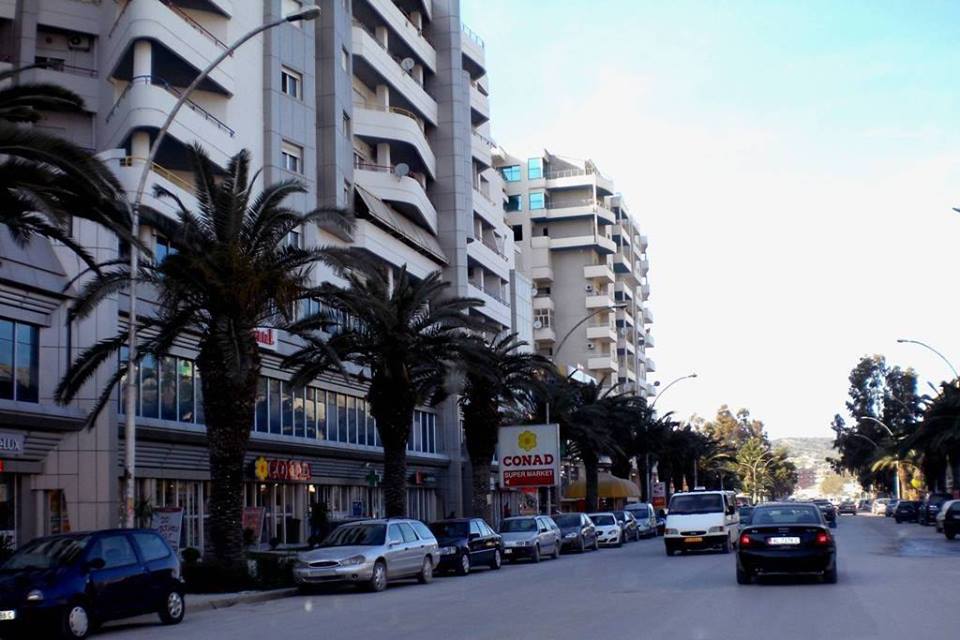
Albania is also home to a surprising number of vibrant cities that offer an urban travel experience completely different from what can be found elsewhere in Europe. In Tirana, uninspired blocks of austere communist-era apartments sprawl outwards from the center of the city, sprinkled here and there with an ornate old mosque or bustling outdoor market. Amidst the old, however, newer structures are going up at an alarming rate, filling in the cities’ formerly empty spaces with a shocking number of sleek new bars and modern restaurants. In the capital especially, visitors will find a bustling nighttime scene, and in the summer dozens of cafes and bars along tree-lined streets like Ismail Qemali spill out into the largely pedestrianized roads, offering comfortable outdoor lounge areas that all seem brand new and impeccably clean, contrasting starkly with the city’s more run-down neighborhoods and crowded main roads. Even in the flashier establishments, drink prices remain reasonable and the crowds laid back.
Other destinations, such as the “museum cities” of Berat and Gjirokastra, provide a peek into the finer moments of Albania’s history through their winding cobblestone streets and well-preserved Ottoman architecture.
Even if the lively nightlife and lovely historical charm of Albania’s cities isn’t enough to draw you in, you’ll have a hard time avoiding them if you’re traveling by bus or furgon. The flexibility and frequency of departures and arrivals makes quick visits to the different cities possible, so it’s easy to stop in Saranda for lunch, or spend a few hours checking out Berat’s charming cobblestone backroads before getting back on the road.
4. Transportation

Albania’s public transportation system is mind-boggling at fist, but once you get a hang of it, you’ll realize that the spontaneous, slightly unorganized nature of it all makes it extremely favorable for impromptu travels and unplanned side trips.
Backpackers basically have three options for getting around: bus, furgon (also known as mini-bus), and taxi (a fourth, rarely used option is the excruciatingly slow train system). Buses are the safest and most reliable way to get around, though their schedules tend to be more limited than the furgons, which are basically large vans that start their routes earlier and end later than the buses do. Furgon drivers have a reputation for going very fast and not always following the rules of the road, but if you’re looking to get somewhere quick, hop on a furgon (and hope it has seatbelts).
If you’re taking either of these options, the important thing to know is where the driver is headed. The destination city will usually be posted on the windshield, though occasionally there’s nothing at all. In those cases, looking a bit lost and a bit foreign usually cues a barrage of helpful drivers, all yelling out their destination city, which makes finding the right bus pretty easy.
It’s also good to know that you can get on and get off where you like, so if you see the bus or van you want driving by, flag it down! They’ll stop if there’s room for you. And if you’re on the bus and you spot a pretty beach or nice little town, just shout and they’ll let you off. This makes it easy to be spontaneous while traveling in Albania, but keep an eye on the clock, because it gets harder to grab a ride as the day goes on and you might find yourself stranded if you wait until early evening to look for a furgon. This unofficial schedule provides a loose idea of when buses leave from the major cities.
When there’s no bus or furgon to be found, taxis offer a surprisingly affordable mode of transportation. As an example, the going rate for the hour and a half trip from Vlora to Dhermi was about 40 dollars, and getting to any of the nice beaches outside of Saranda, Vlora, or Himara would likely cost little more than a couple of bucks. Scheduling a pick-up gets more complicated, so keep that in mind when visiting destinations off the main roads. Hitchhiking is very common for locals as well as tourists, so in more remote areas, including the road leading to the Blue Eye, don’t be surprised if you’re offered a ride, even if you’re not holding up your thumb.
5. The people
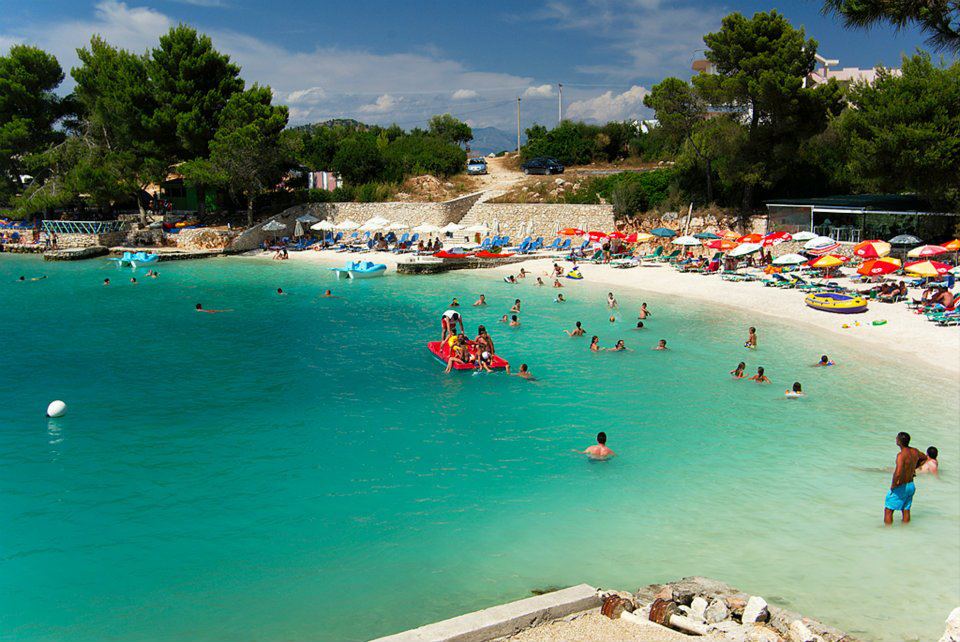
After many years of isolation under communist rule, Albanians were finally allowed to travel internationally in 1990. Those restrictions, as well as the lack of international visitors to the country in recent decades, have limited the exposure that many Albanians have had to different cultures, languages, and people. Many of the people who I met on our trip were genuinely interested in why I was visiting their country and where I came from, which is a welcome change from the reception that many travelers receive in the more heavily visited tourist destinations of the world.
Within minutes of boarding my first bus in Albania, I was sharing water and Skittles with the driver and several passengers, helping a few young girls practice their English skills, and saying hi to a relative of an elderly passenger who had called her family on her cell phone to tell them that she had met two Californians on the bus. It was an experience that I had never had on my travels before and haven’t had since, and it certainly helped to take my mind off the five hours I spent on a rickety old bus between Tirana and Vlora.
English is spoken by many young Albanians, but it’s surprisingly easy to find Italian-speakers of all ages throughout the country, and much of my communication during my travels was a curious mix of botched Italian sprinkled with Spanish, an English word here or there, falëminderit (which means thank you in Albanian), and a lot of gesturing and the occasional drawing. In general, people were patient and extremely helpful with my attempts to communicate, and putting the extra effort into talking with locals provided me with some of the more memorable moments of my trip, though brushing up on a few key Albanian words would be helpful, if you can manage the tricky pronunciation.
6. The nature
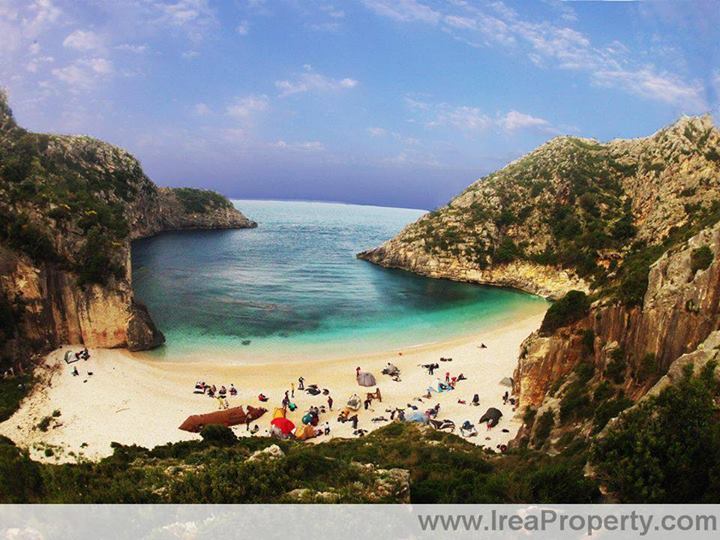
Even if the people weren’t so friendly, the beaches so beautiful, and the cities so unique, Albania would still have plenty to offer. Being one of Europe’s most mountainous countries means that a fantastic view is never far away, and traveling any of the country’s twisting-turning mountain roads practically guarantees spectacular scenery all along the way. The drive from Vlora to Dhermi is particularly enjoyable, offering vistas of the wild Karaburun peninsula across the Bay of Vlorë, as well as lagoons, beaches, and the heavily wooded national park that lies just south of the city.
But while the great views and pretty scenery are basically unavoidable, other places will need to be sought out. One of those places is known as the Blue Eye. It’s called Syri i Kaltër in Albanian, but locals will recognize the name in English. Located just outside of Saranda on the way to Gjirokastra, the Blue Eye is a freezing cold underwater spring with an unbelievable sapphire color. The river that flows downward from the spring is some of the clearest, cleanest water you will ever see, and just laying eyes on the thousands of gallons of ice cold water gushing out of the center of the Eye is worth the trek it takes to get there.
The Eye is located outside of Saranda, just off the road to Gjirokastra. Ask the bus driver to drop you there, then follow the signs. It’s a good distance from the main road to the spring itself, so go early and keep your fingers crossed that a passing driver will pick you up, or plan to stay the night at the rustic hotel near the spring. The restaurant and bar located alongside the river serves excellent roasted lamb ribs and cold beer, so bring your appetite and prepare to take in some of the most incredible scenery you’ve ever seen while chowing down on a local specialty.
7. The food
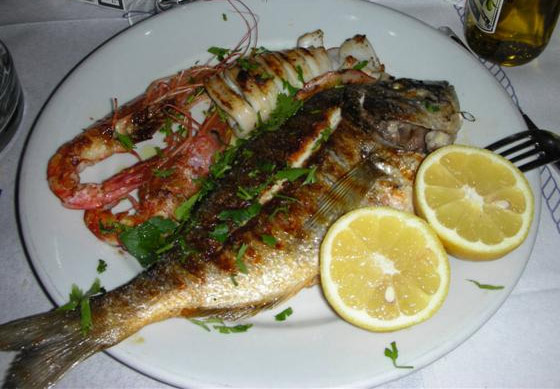
Due to its largely Muslim population, lamb is often the meat of choice on Albanian menus, and the spit-roasted variety is a favorite in many Albanian cities. Other meats are frequently available, but the lamb is good and almost always locally raised, so it’s definitely worth a try.
Coastal cities offer a plethora of fresh, local seafood, often pulled right out of the water. If you can figure out how to ask or gesture, it’s a good idea to ask to see the catch of the day. It’s not unusual to get to pick your dinner out of a basket of freshly caught fish, and taking recommendations from the staff is sure to land you a tasty meal. A dinner of fresh fish will usually be the priciest option on the menu, but at a pretty consistent nine dollars per serving, it’s worth the splurge.
Vegans and vegetarians will appreciate the bounty of fresh fruits and vegetables that Albania’s farms produce, most of which is locally and organically grown, only because many small farmers can’t afford to buy pesticides and fertilizers. Greek salad is a staple on most menus, and the mix of fresh cucumbers, onions, peppers, and tomatoes, topped with olives and homemade feta will probably be one of the most flavorful salads you’ve ever had, wherever you end up ordering it.
If you’re not an adventurous eater, don’t worry. Albania’s proximity to Italy means that pizza and pasta make up a considerable portion of most restaurants’ offerings, and even in Albanian it’s easy to read the Italian items off the menu. Albanian food in general tends to resemble Greek cuisine, so even if you’ve never eaten at an Albanian restaurant, you’ll probably recognize many of the dishes. Most restaurants won’t have a foreign language menu, so familiarizing yourself with a few key items to order—or avoid, is probably a good idea. Era restaurant in Tirana is an exception, they have an English menu and a huge selection of Albanian specialties and Italian basics, so it’s a great way to get acquainted with what’s on offer throughout the rest of the country.
Albanian beers like Korça or Tirana are just as good as the international options, at a much lower price, and strong black coffee and the white wines of the country’s northern regions provide a good selection of local drinking options. The water is safe to drink, though more sensitive stomachs might want to be a little more careful and stick to the bottled stuff.
And the best part of all—the prices. Eating well in Albania is extremely easy when an entire pizza or plate of risotto costs about four dollars, and a full, fancy meal for two with drinks is easy to come by at under ten.
8. The history
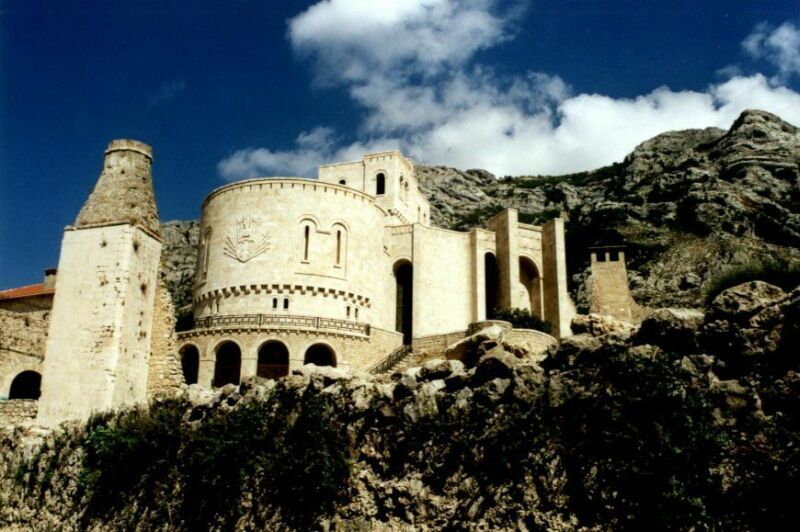
When you’re all beached out and full of all the fine food and drink that the country has to offer, spend some time in Albania’s historical sites. Many of the castles and ruins throughout the country give visitors a much more up close and personal view of history than what’s available in other European countries. You won’t find any guard rails or roped-off areas in the fortresses at Porto Palermo or Gjirokastra, where visitors are more than welcome to climb over stone walls and crawl into dark little passages, and in Berat, there are over 200 people still living inside the walls of the city’s old fortress, many in beautifully maintained Ottoman-era homes that offer great views of the river valley below.
Ali Pasha’s fortresses are a must see for kids and adults alike, and the slightly overgrown, poorly lit interiors really makes it feel like you’re stepping back in time when you enter into the dark, musty halls. In Gjirokastra, the fortress is home to a collection of heavy artillery from WWII, as well as a U.S. Air Force plane rumored to have been brought down while spying on the country in the 1950s.
The city of Butrint, just outside of Saranda, is home to a spectacular array of ruins spanning a 2,500 year period that includes the Roman era and earlier. In the summer, theatre performances are occasionally held on a wooden stage in the old amphitheatre, which is partially filled with water, but Butrint is a pleasant place to visit any day of the year, and the combination of architectural styles are fascinating, especially if you luck out and get a working archaeologist as your tour guide.
A more recent historical relic that you won’t be able to avoid on your travels throughout the country is a reminder of some of the darker moments in Albania’s past. Hundreds of thousands of mushroom-shaped concrete bunkers, installed during communist rule, dot the countryside, a tactic that the government hoped would protect the country in case of an attack from the U.S. or Britain. The bunkers were never really used, but they certainly were well constructed, so the majority of them still stand, nestled into the hills above the main roads or clustered in groups on the beaches.
What to know before you go
If you plan on flying to Albania, you only have one option. Mother Teresa International Airport in Tirana is the country’s only one, and there are just a few airlines that fly there, including AlItalia and BelleAir. Prices out of a few European cities, especially larger Italian ones, tend to be significantly cheaper than the normal European points of departure like London or Frankfurt, so scheduling a cheap Ryanairflight to a city such as Milan and then continuing on to Tirana can often be the most cost effective option for long haul travelers.
Ferries from Italy are also a popular way to enter Albania, and there are overnight voyages that depart from Bari and Brindisi several times a week, depending on the time of year. Ferries are usually cheaper than flights at around seventy dollars each way, but the trip can take up to eleven hours, and adding the cost and time it takes to get to the Italian ports, in addition to the long boat ride, can often make flying seem a little more attractive. There is also a ferry from Corfu that sails to Saranda in about half an hour and costs about twenty-five dollars each way.
Getting into the country by land can be difficult from the north, due to the mountainous countryside and lack of roads. Entry from Greece is more popular, and there are buses from Athens, as well as other northerly locations that will take you over the border, often at very low prices. The journey is long, hot, and probably crowded. If you suffer from motion sickness, invest in some Dramamine before you make any long-distance drive in Albania.
There are ATMs all over Tirana and in the other larger cities as well. Smaller destinations like Dhermi do not have ATMs or banks at all, and paying with a credit card will be nearly impossible almost anywhere in the country outside of the fanciest hotels in the capital. It’s a good idea to keep a significant amount of cash on you, and small bills are preferable. The first cash machine that most visitors will encounter is in the airport, and drawing lek from the machines with a foreign ATM or debit card isn’t any different than in other international destinations, and is probably the most economical and reliable way of changing your money.
Bargaining is common and acceptable when taxis and lodging are concerned, and it can often be quite productive. Be proactive and courteous when it comes to fixing a price, and you are likely to save a bit of your travel funds without offending anyone. Taxi drivers are especially likely to bargain because of the plethora of other inexpensive travel options available throughout the country.
In visiting the cities, a guidebook or some kind of map will come in handy, though the use of street names is inconsistent and many hotels will rely on landmarks for directions instead of actual street names and addresses. In some of the smaller cities, it is rare to ever see a street sign, but having an idea of the lay of the land will be helpful in your attempts to navigate.
Pre-departure planning for a trip to Albania can be a little frustrating due to the lack of resources available online, or anywhere for that matter. There are a few guidebooks available, and I made frequent use of the Bradt guide that I bought before my trip, though it was far from comprehensive. Having a general idea of what you want to do and see and an open mind are the best ways to prepare for your trip. I’d recommend that anyone entering the country through the capital spend their first night at the Tirana Backpackers Hostel. The first (and only) hostel in the city has a friendly English-speaking staff who are incredibly helpful and will gladly give you all the advice you need on what to see and where to go while you are in the country. They have other locations throughout Albania as well, and the 12-euro rate is a deal considering all the help they’ll be able to provide, plus free wi-fi and one euro beers at the little bar in the back.
Subscribe
Subscribe to our e-mail newsletter to receive updates.





